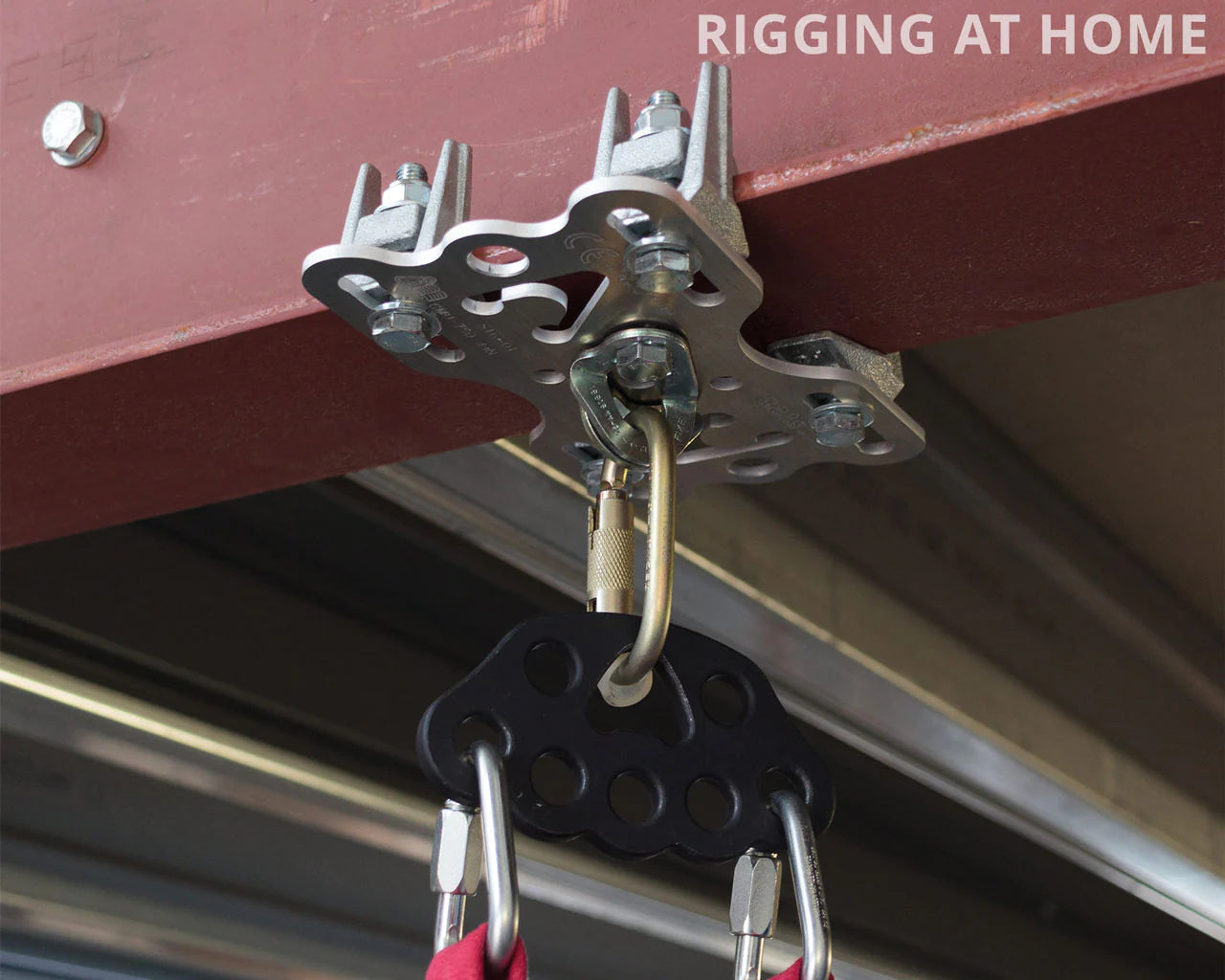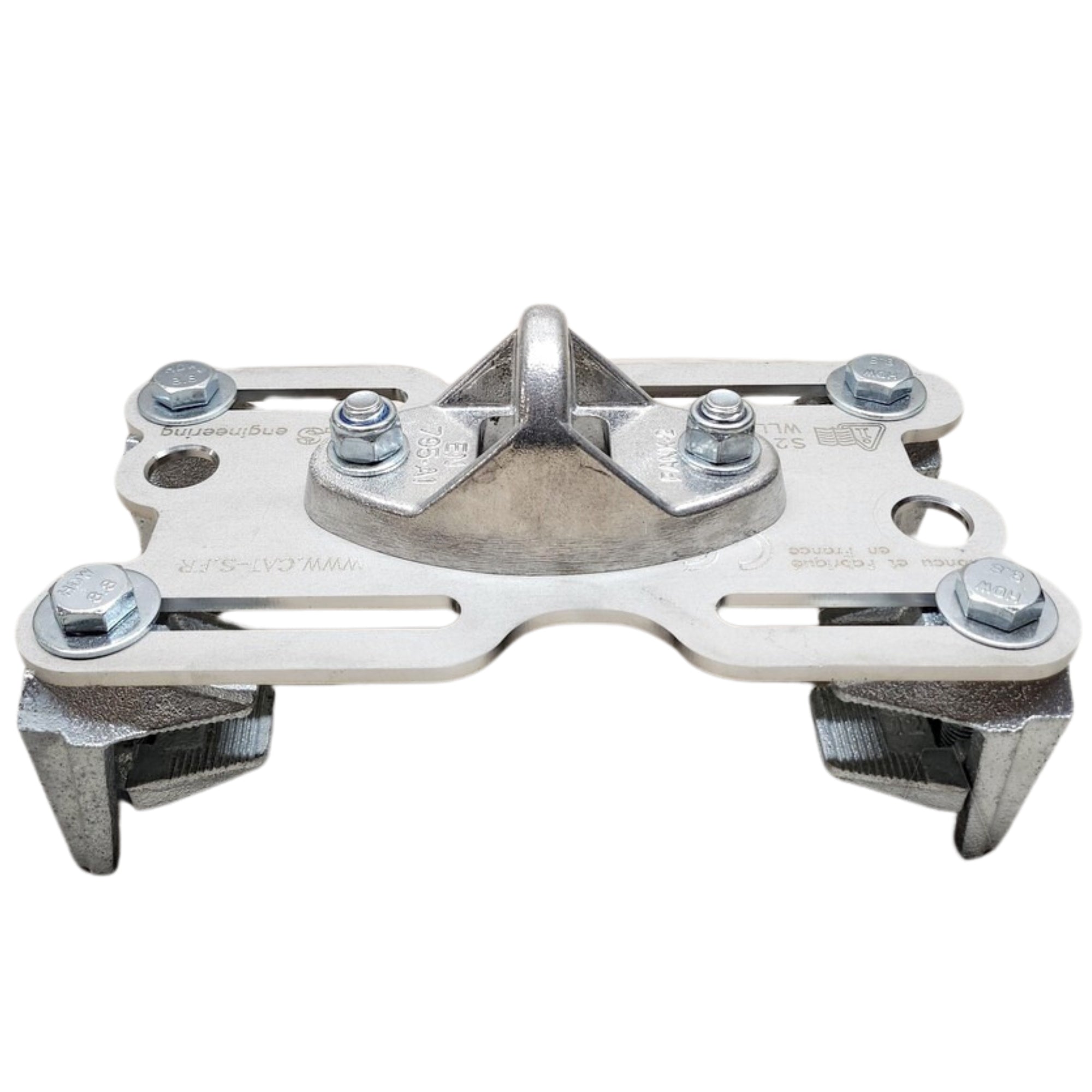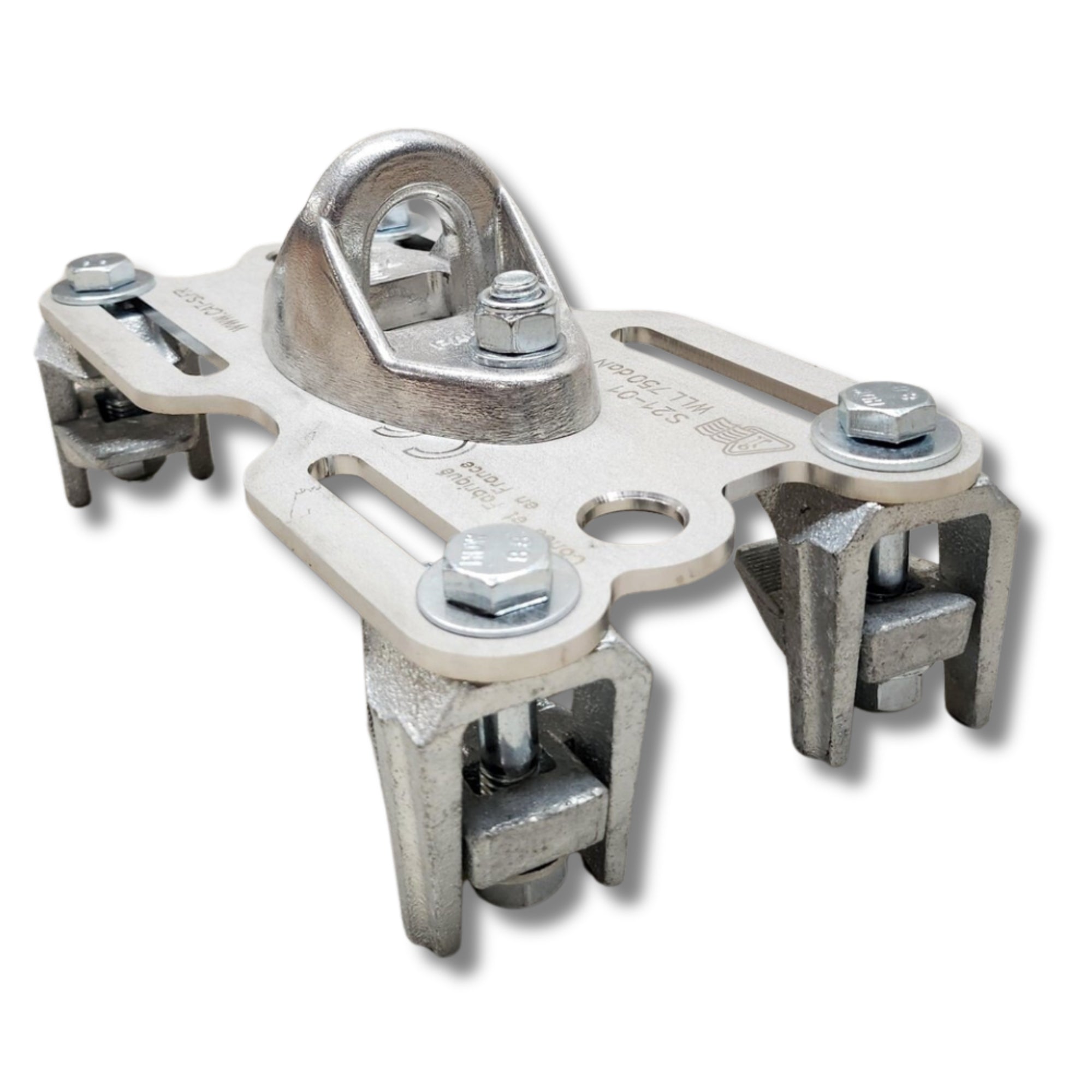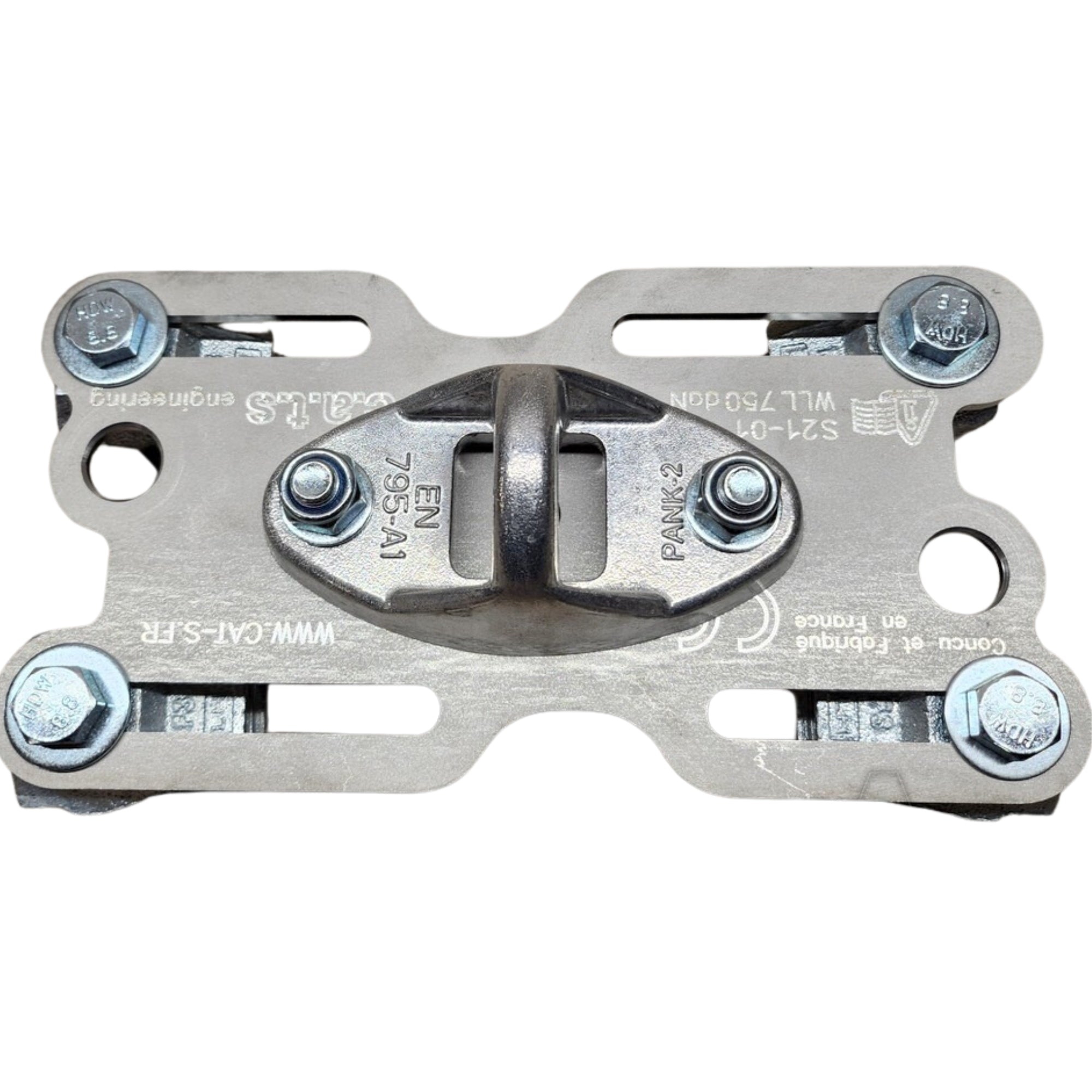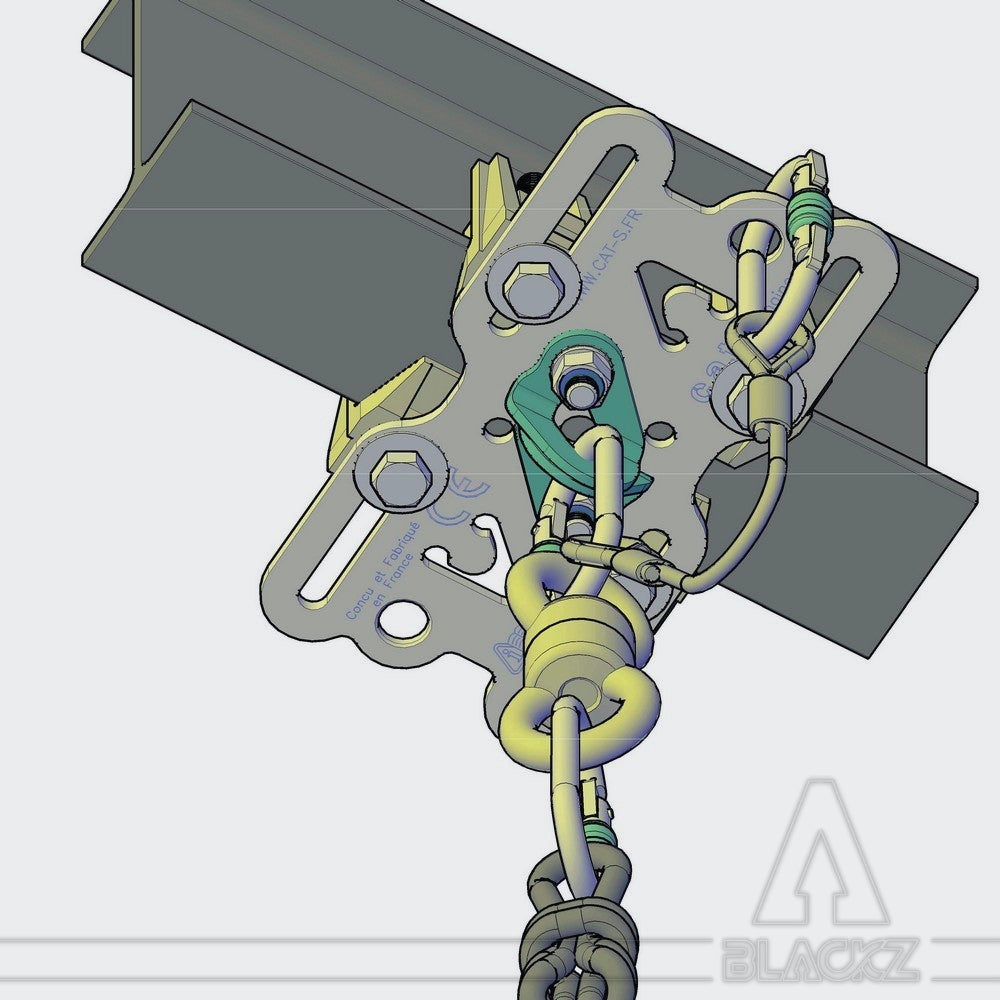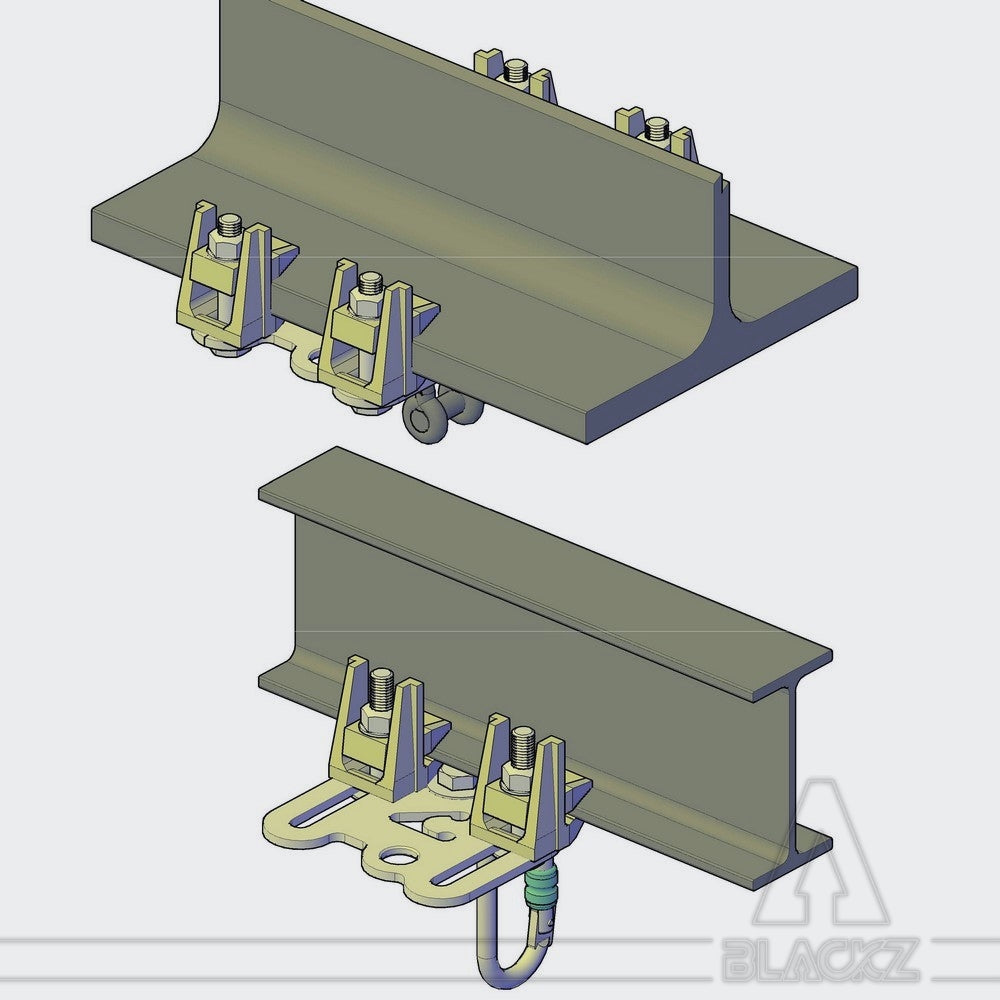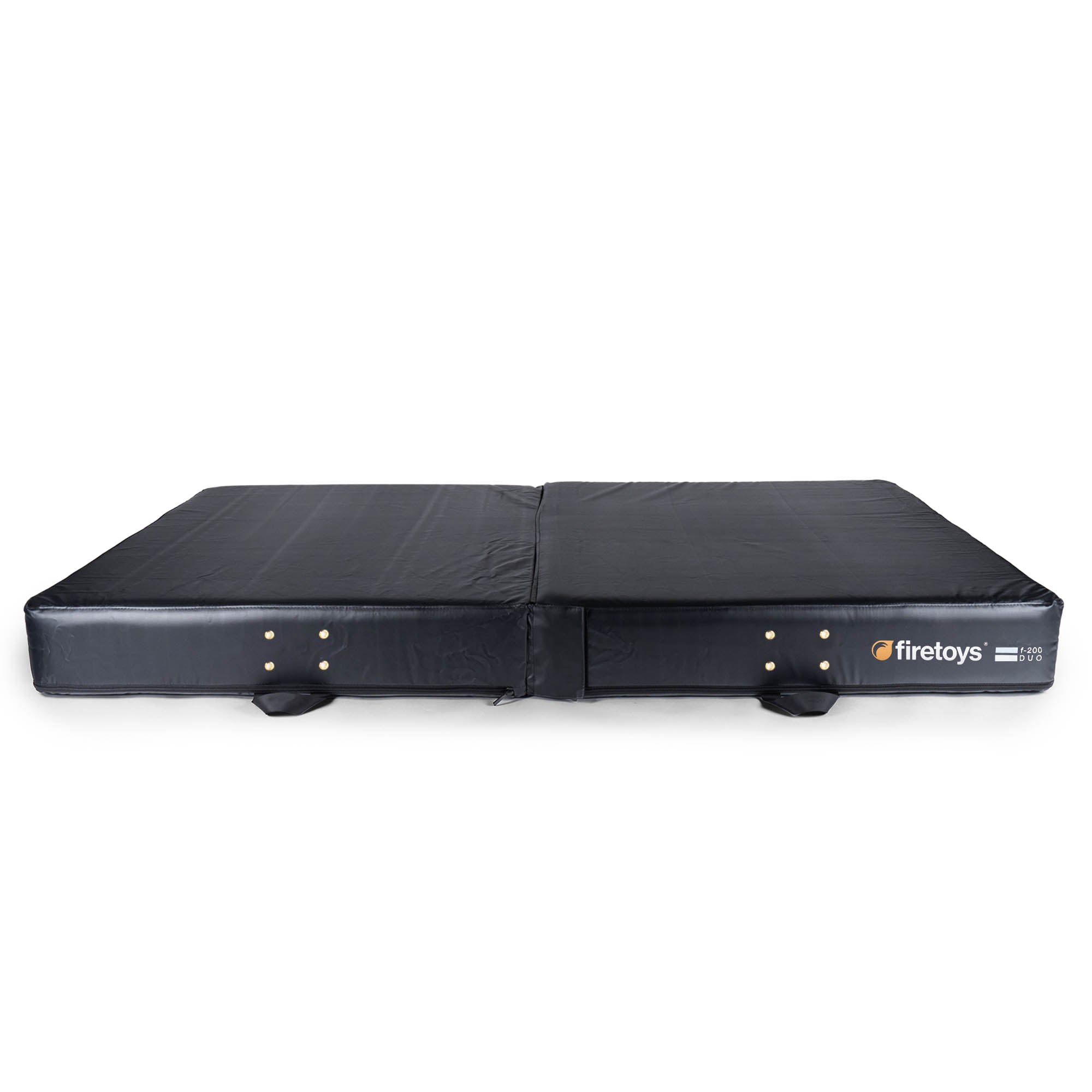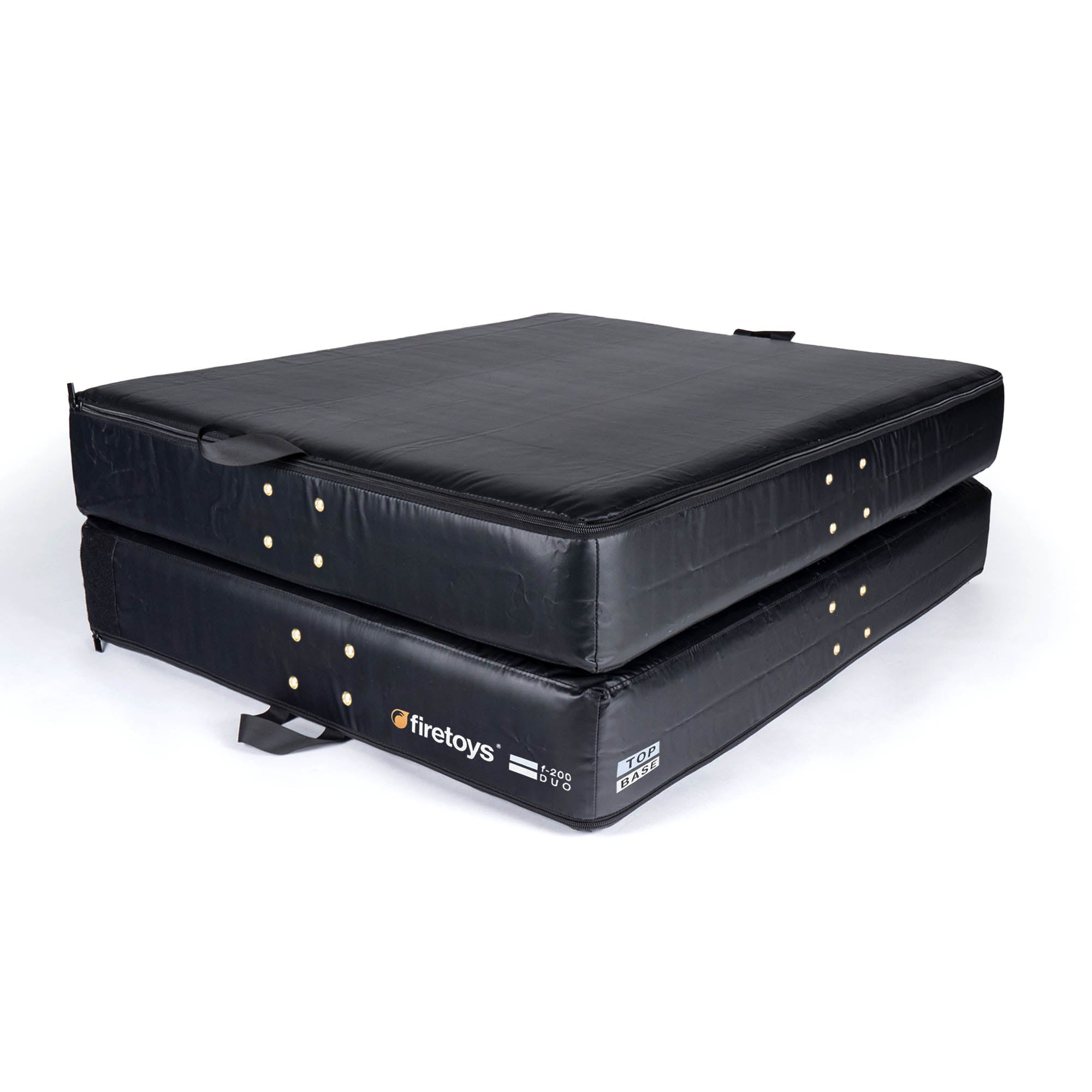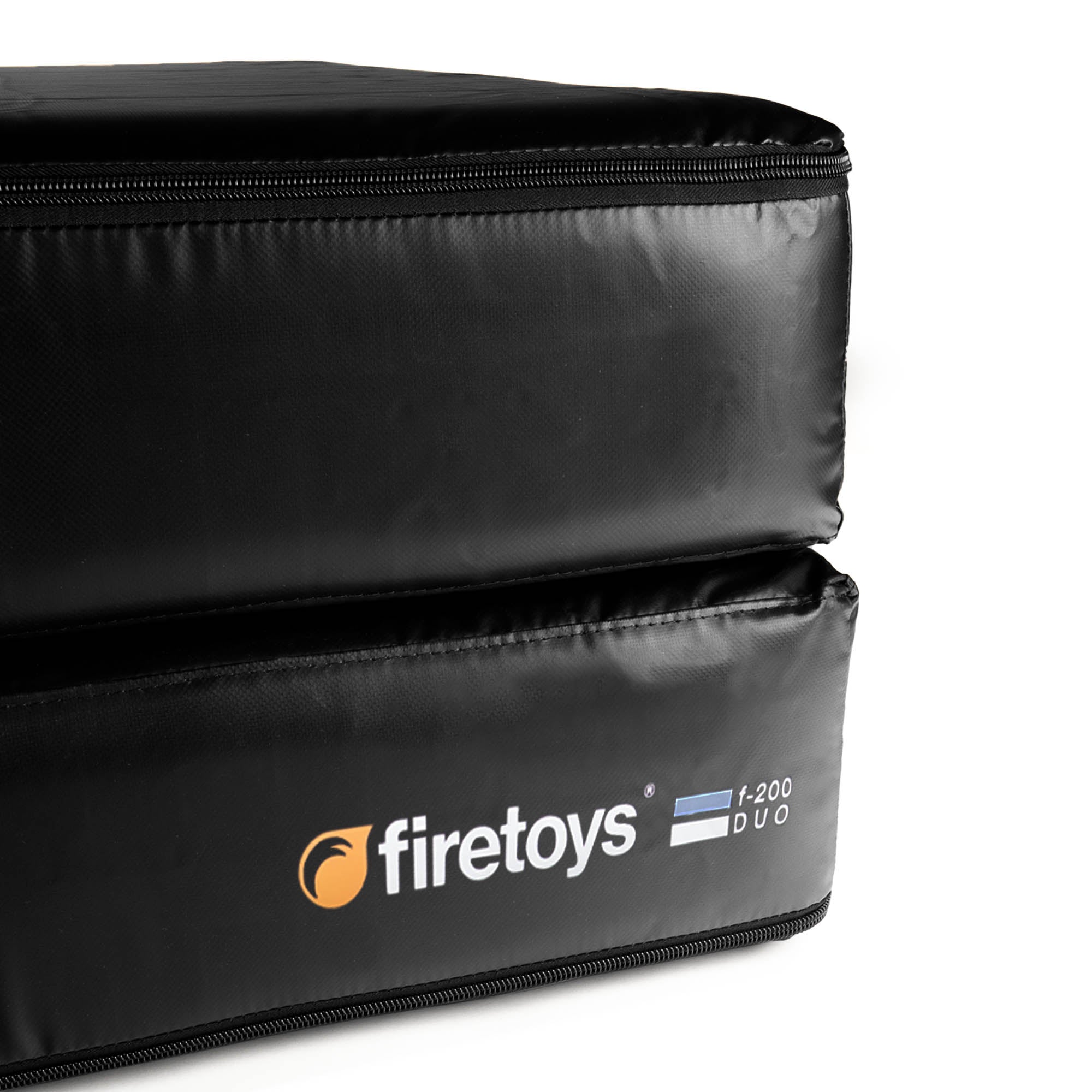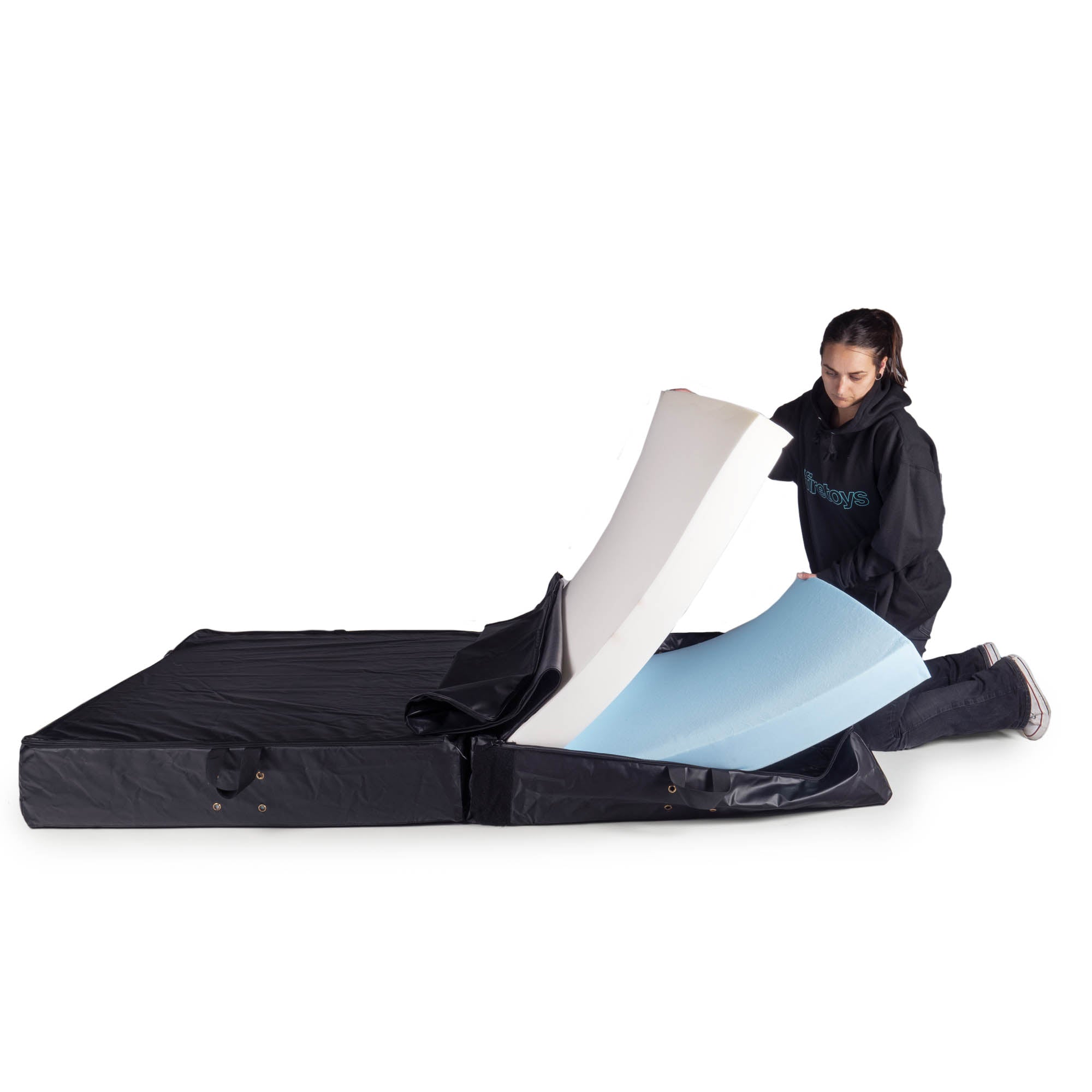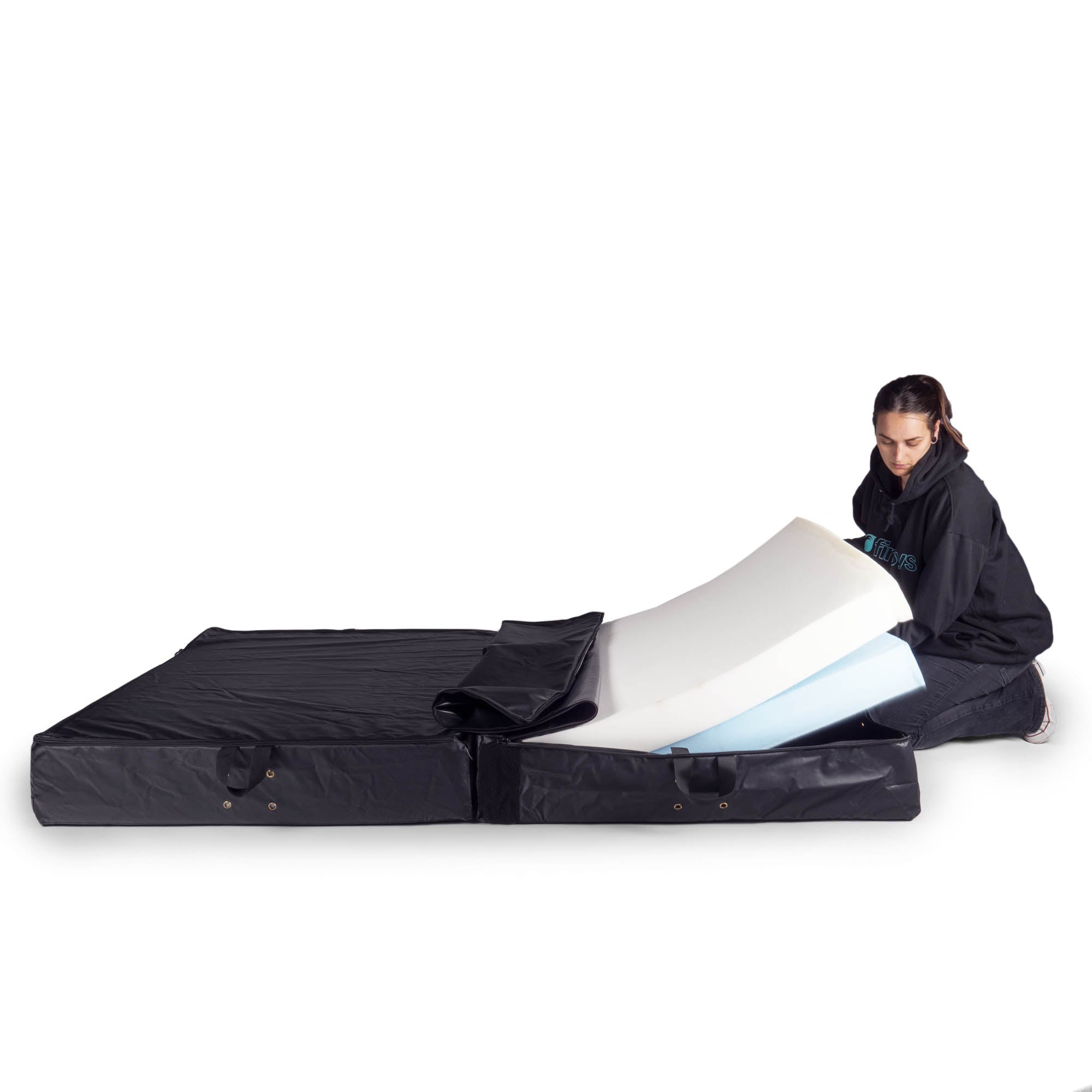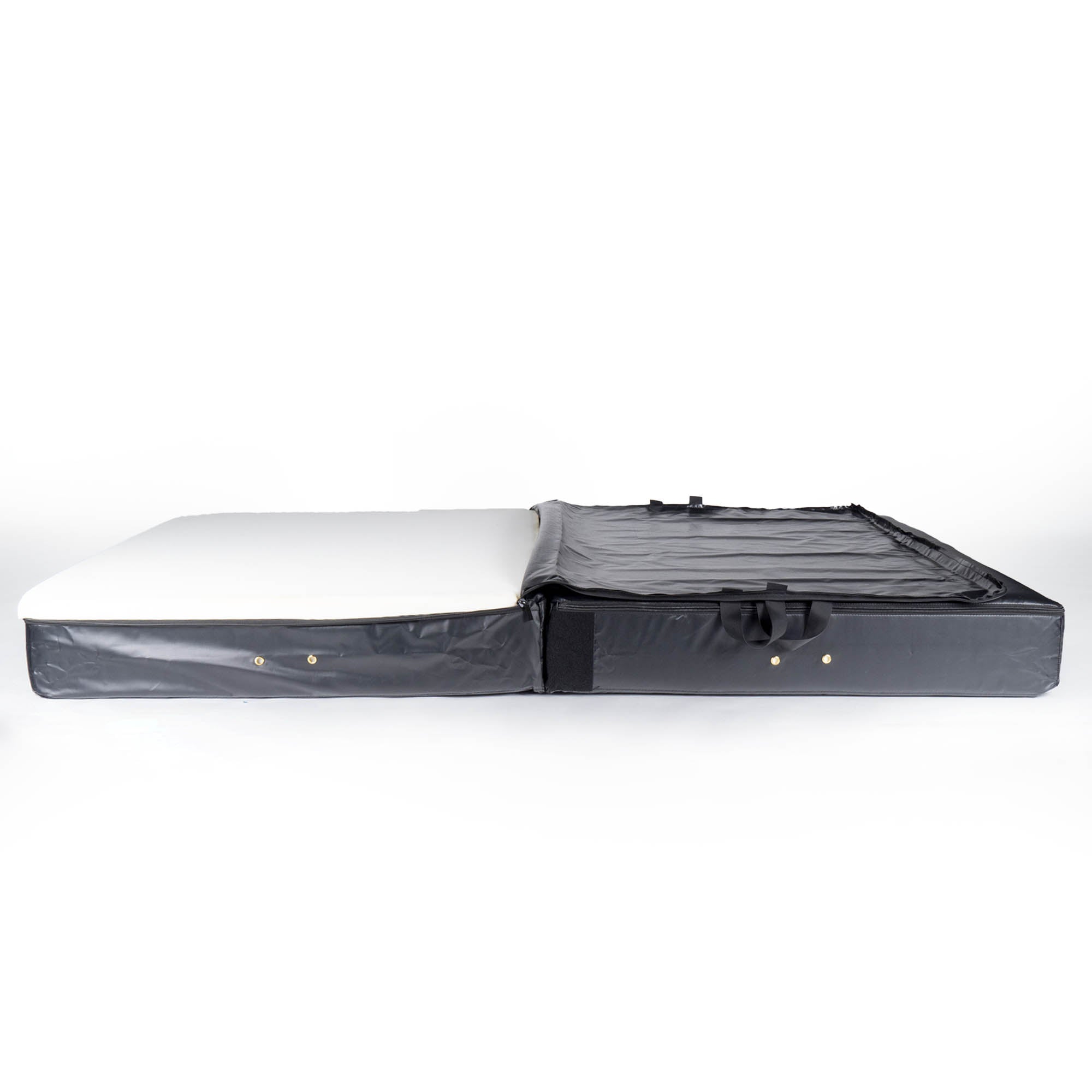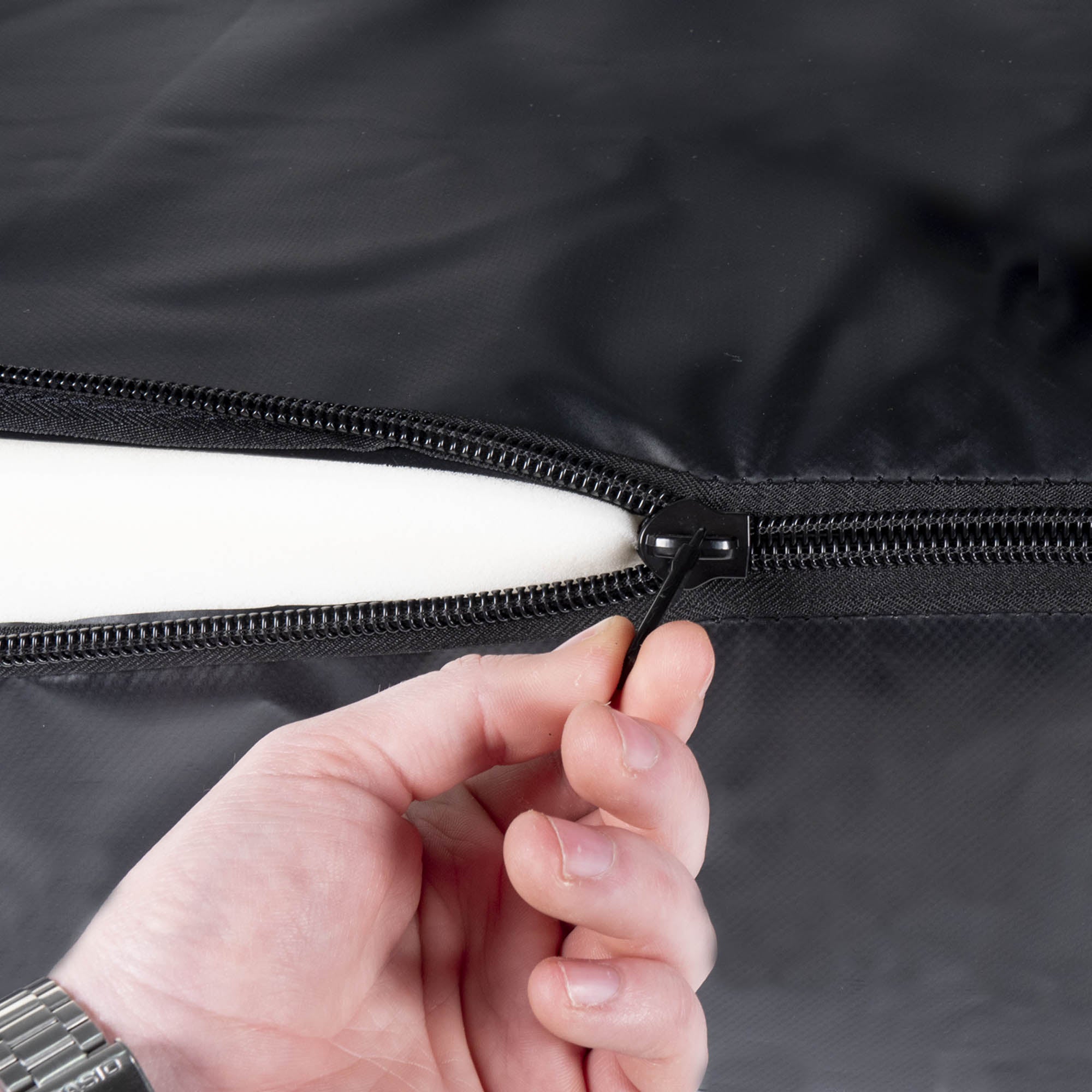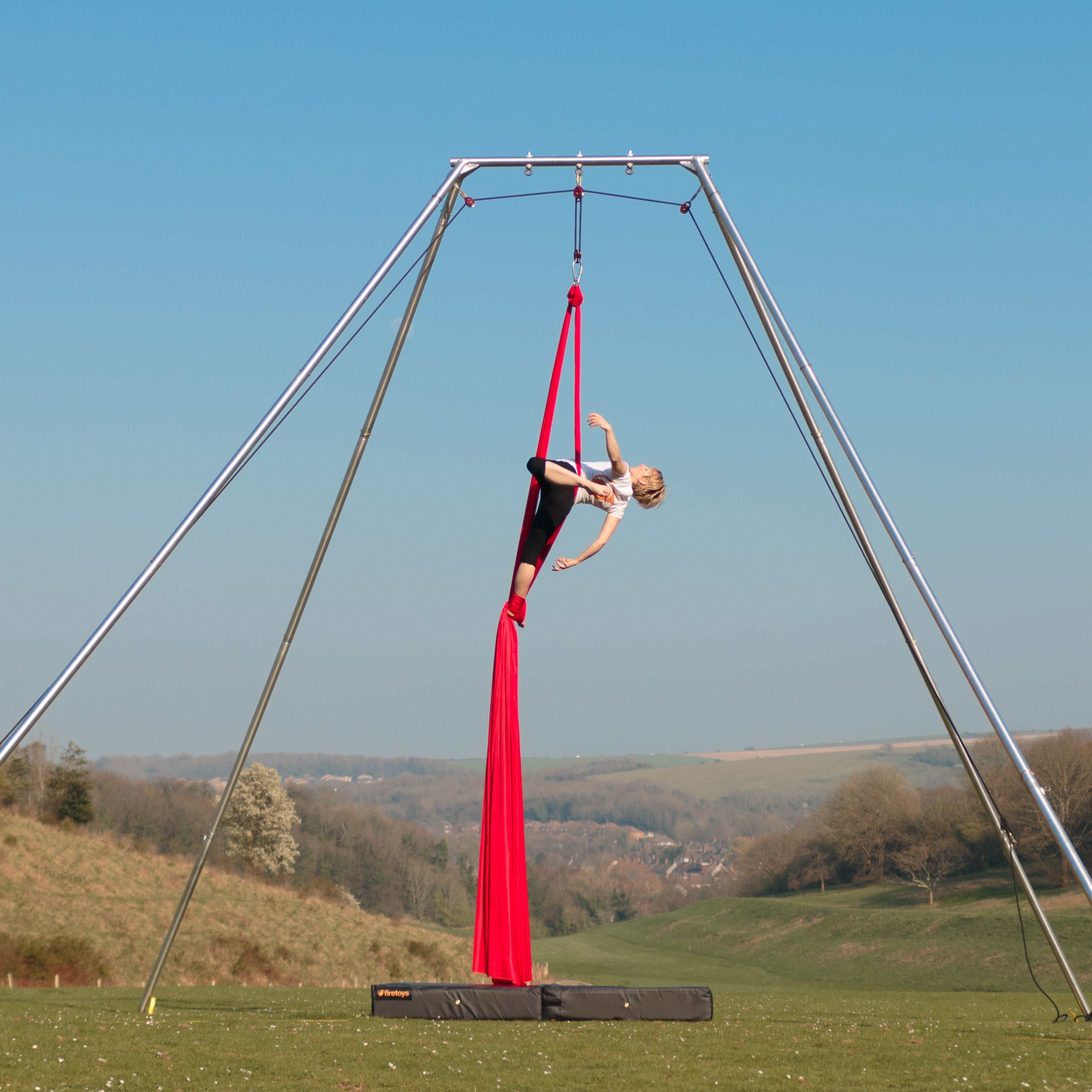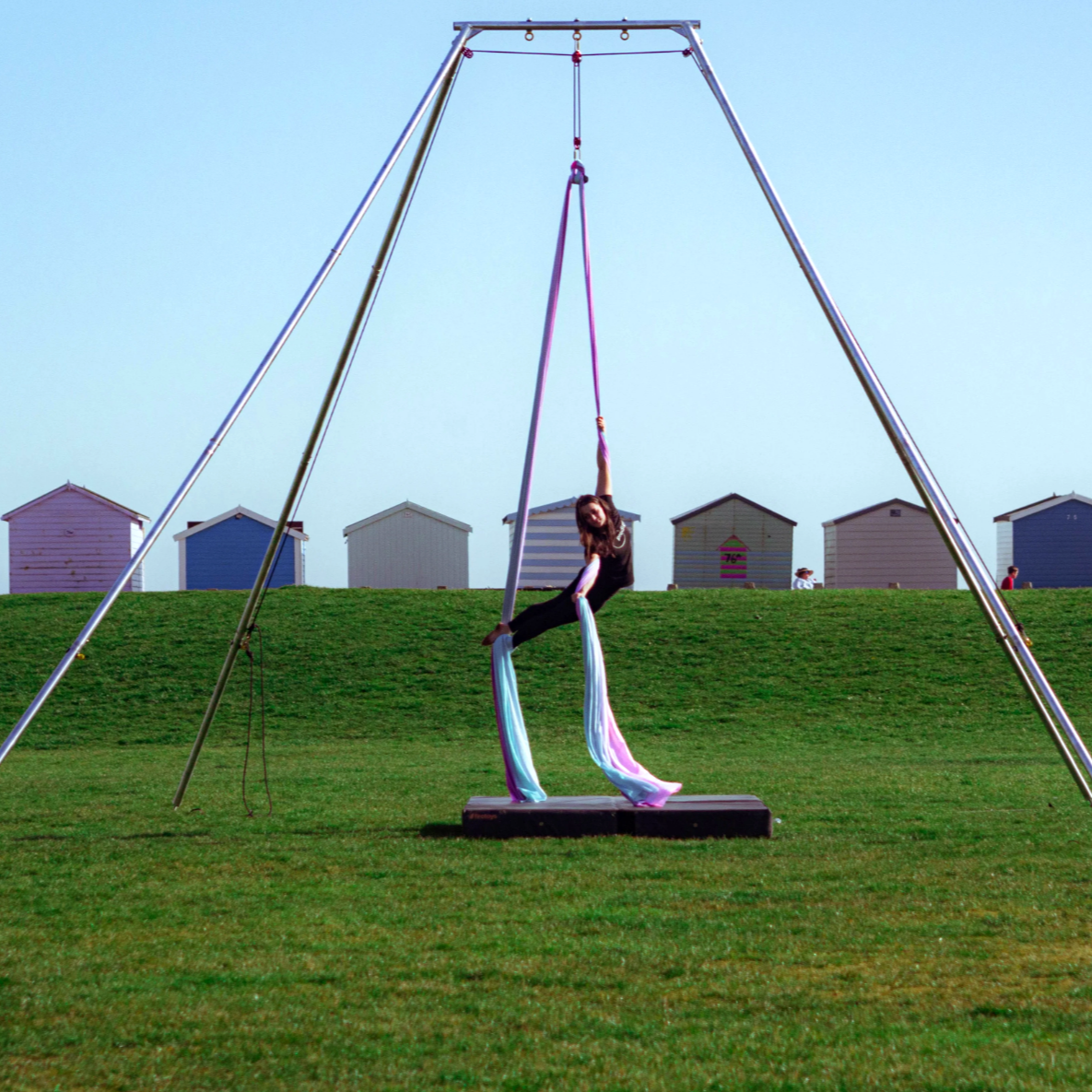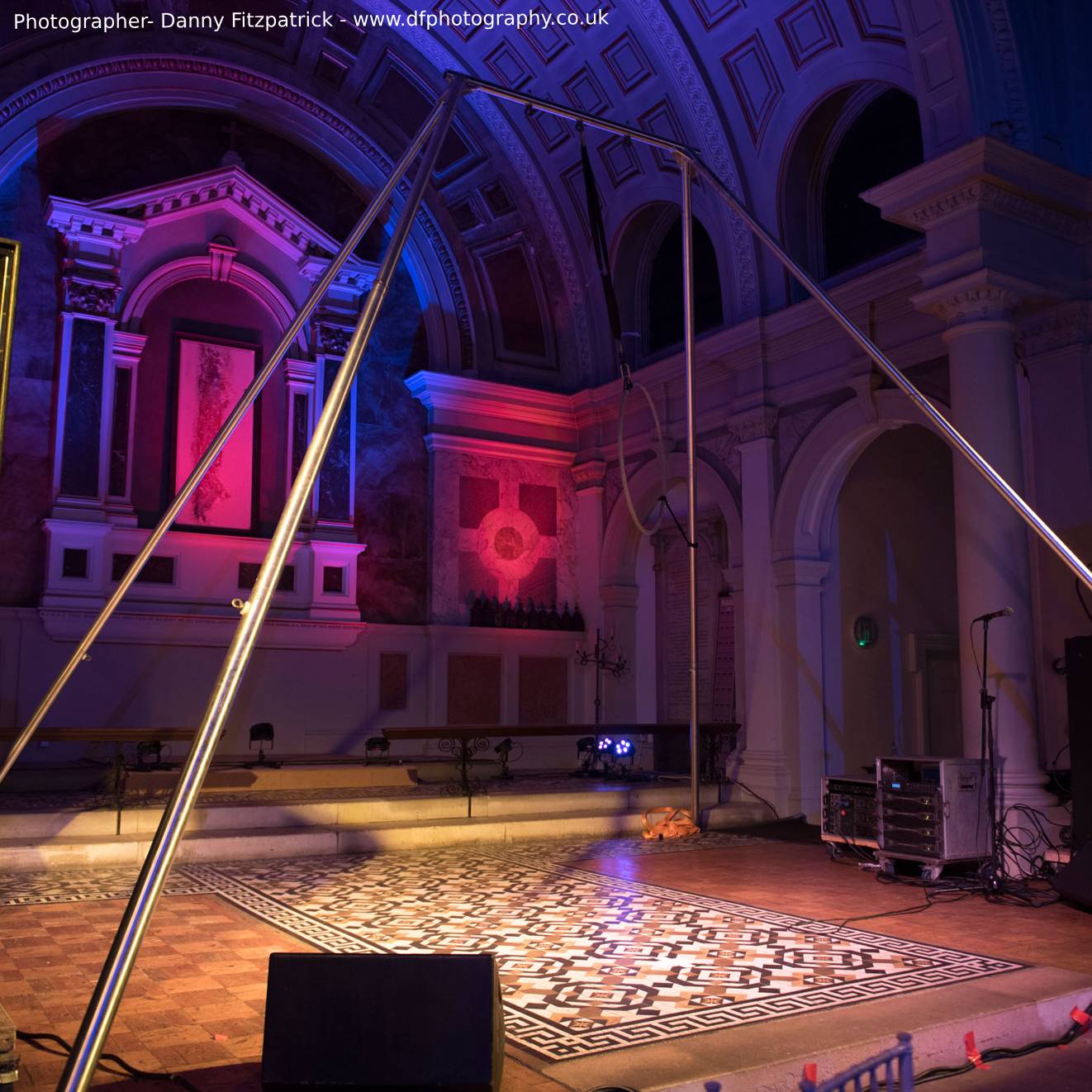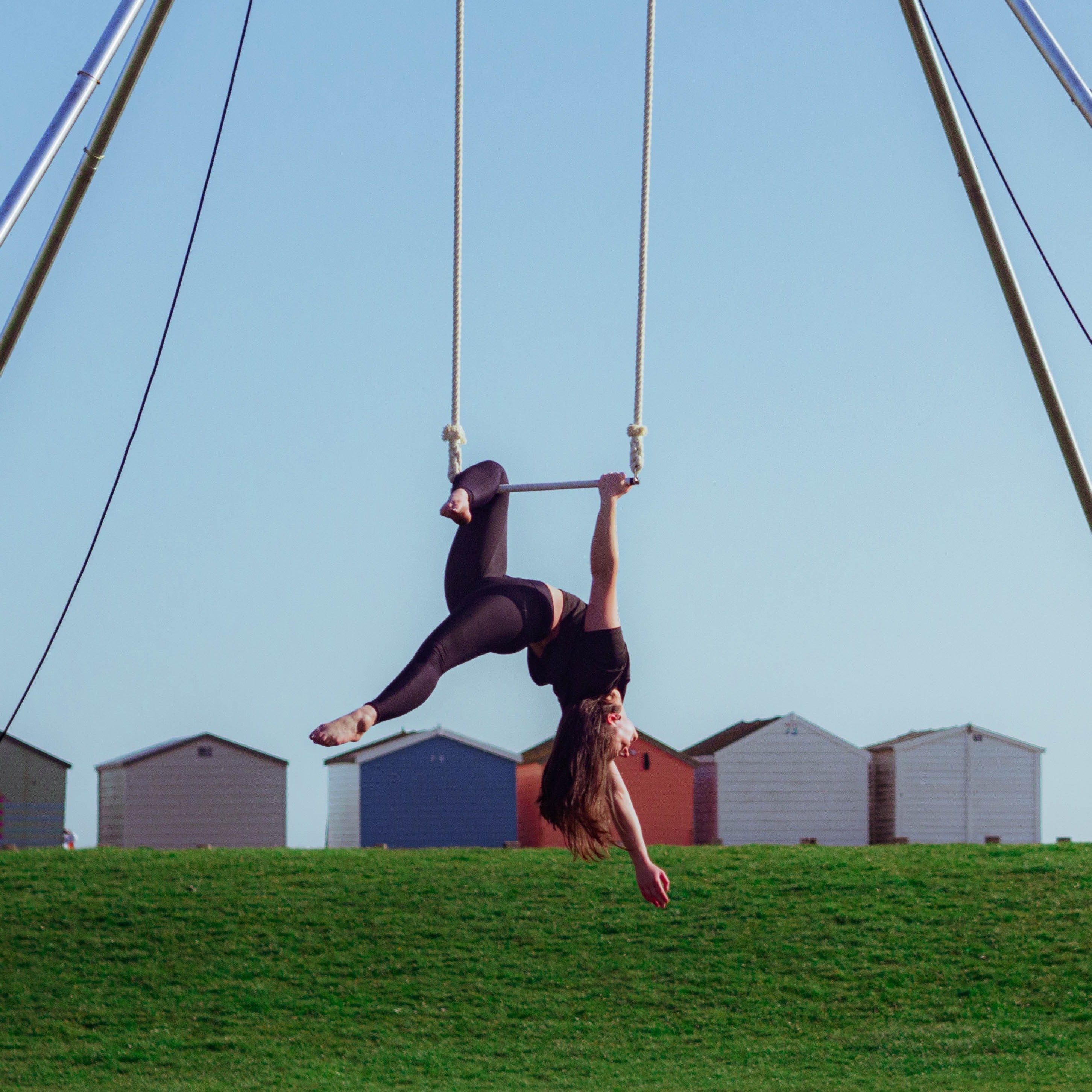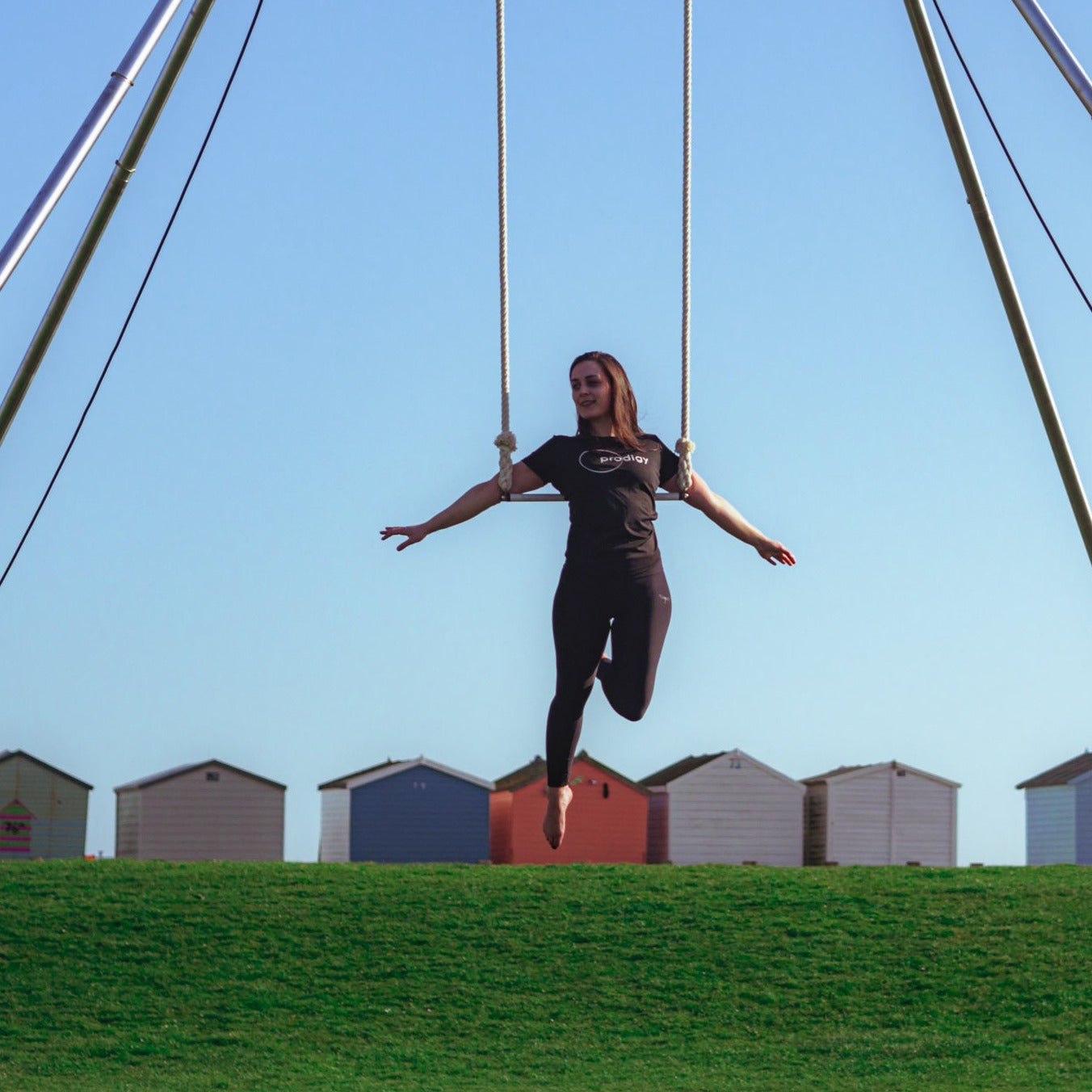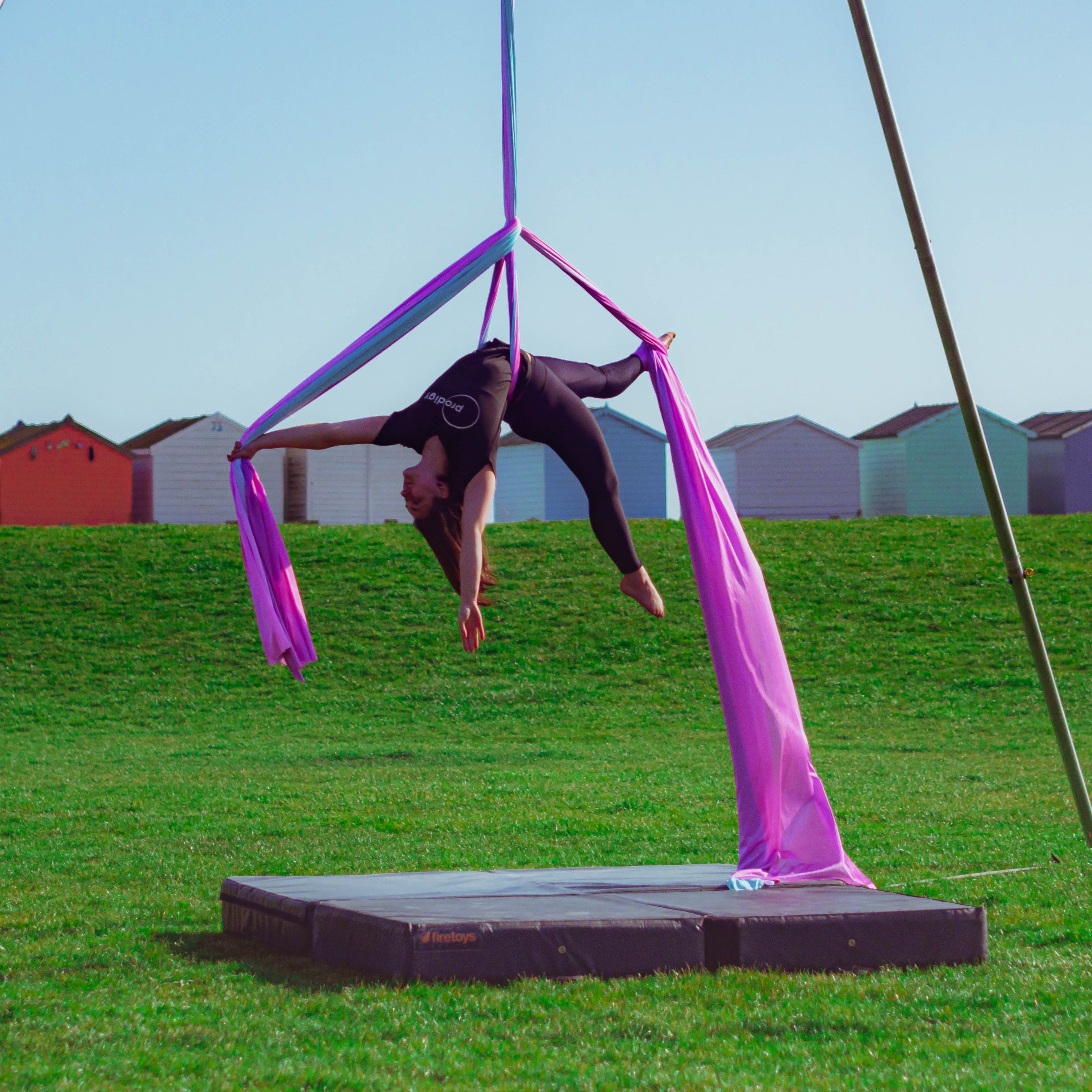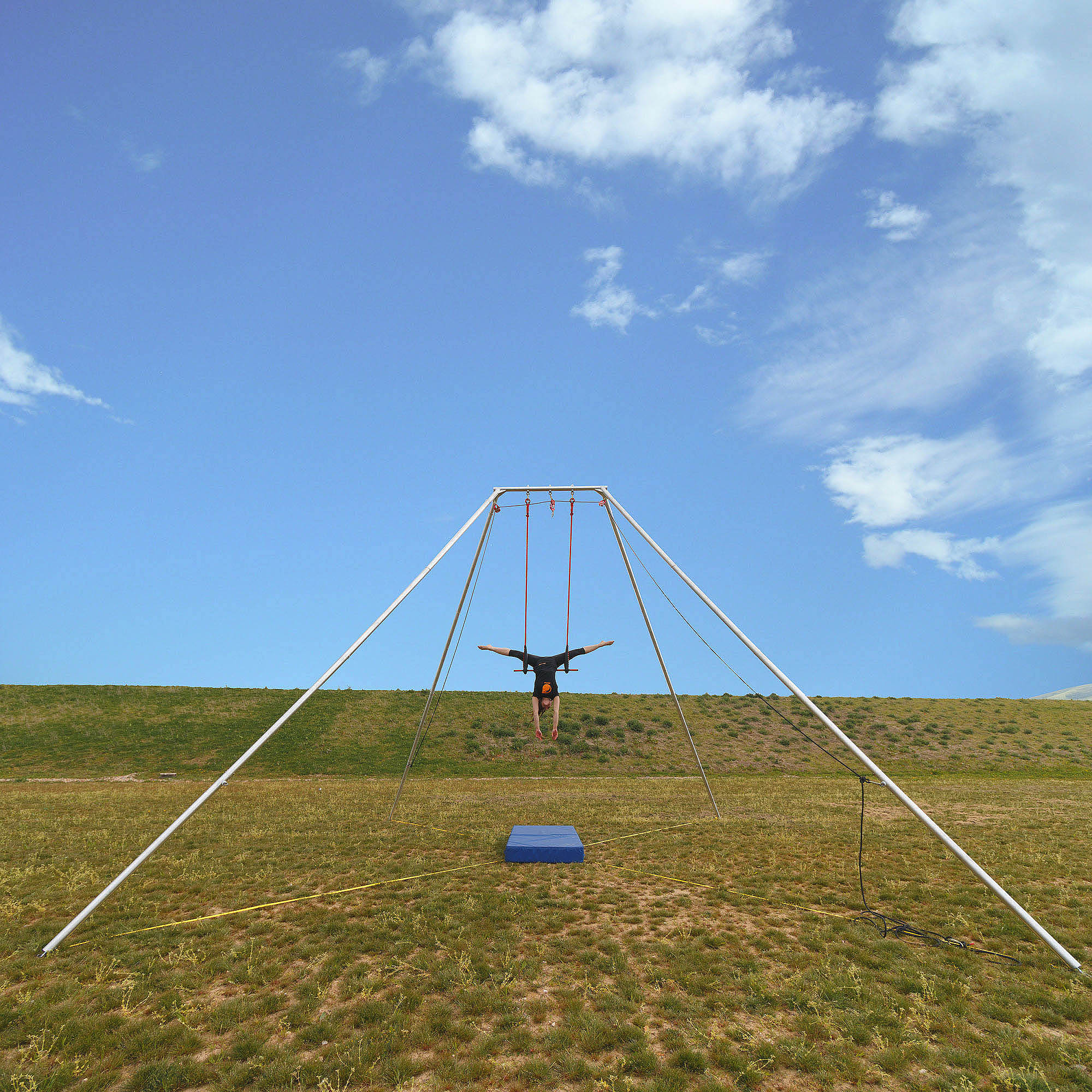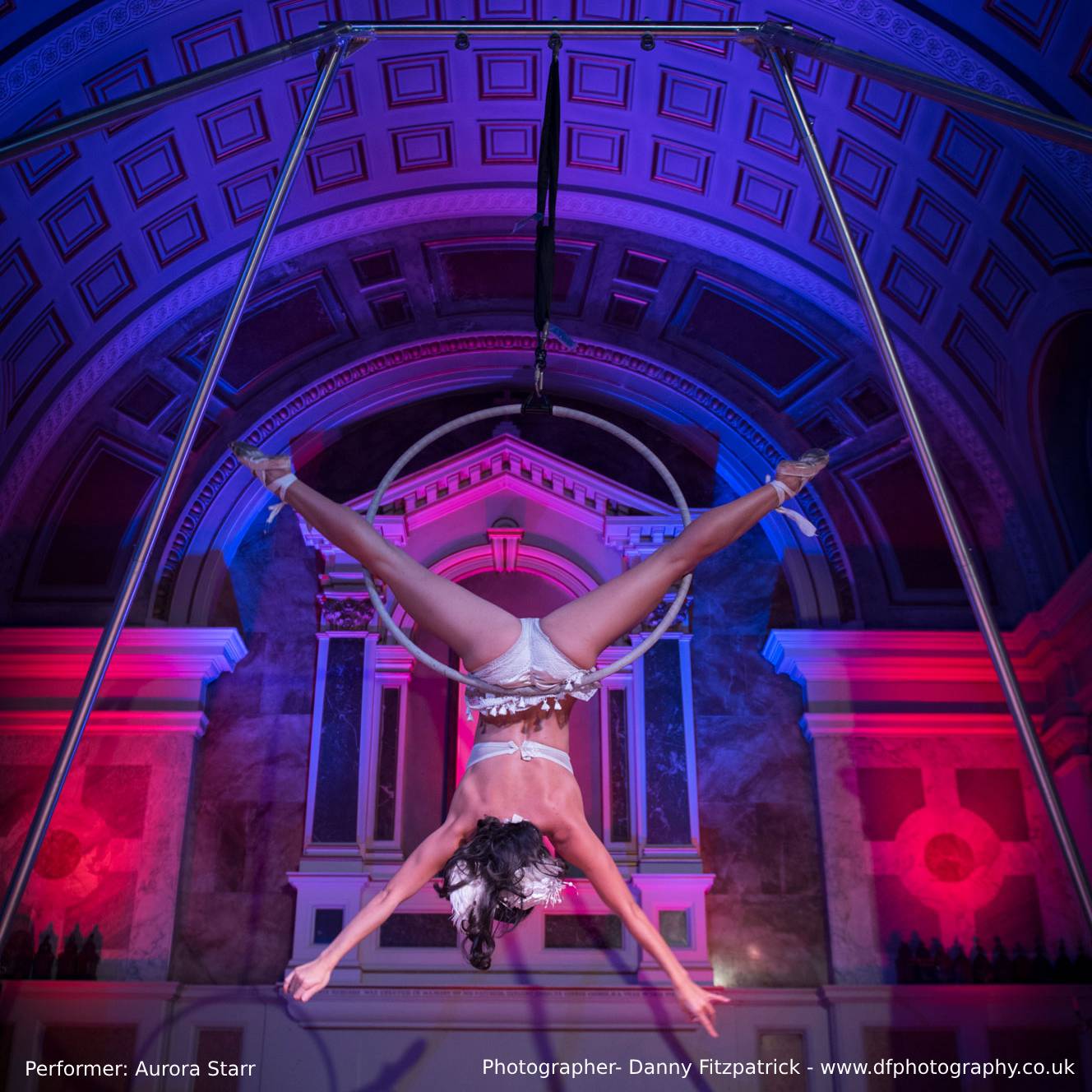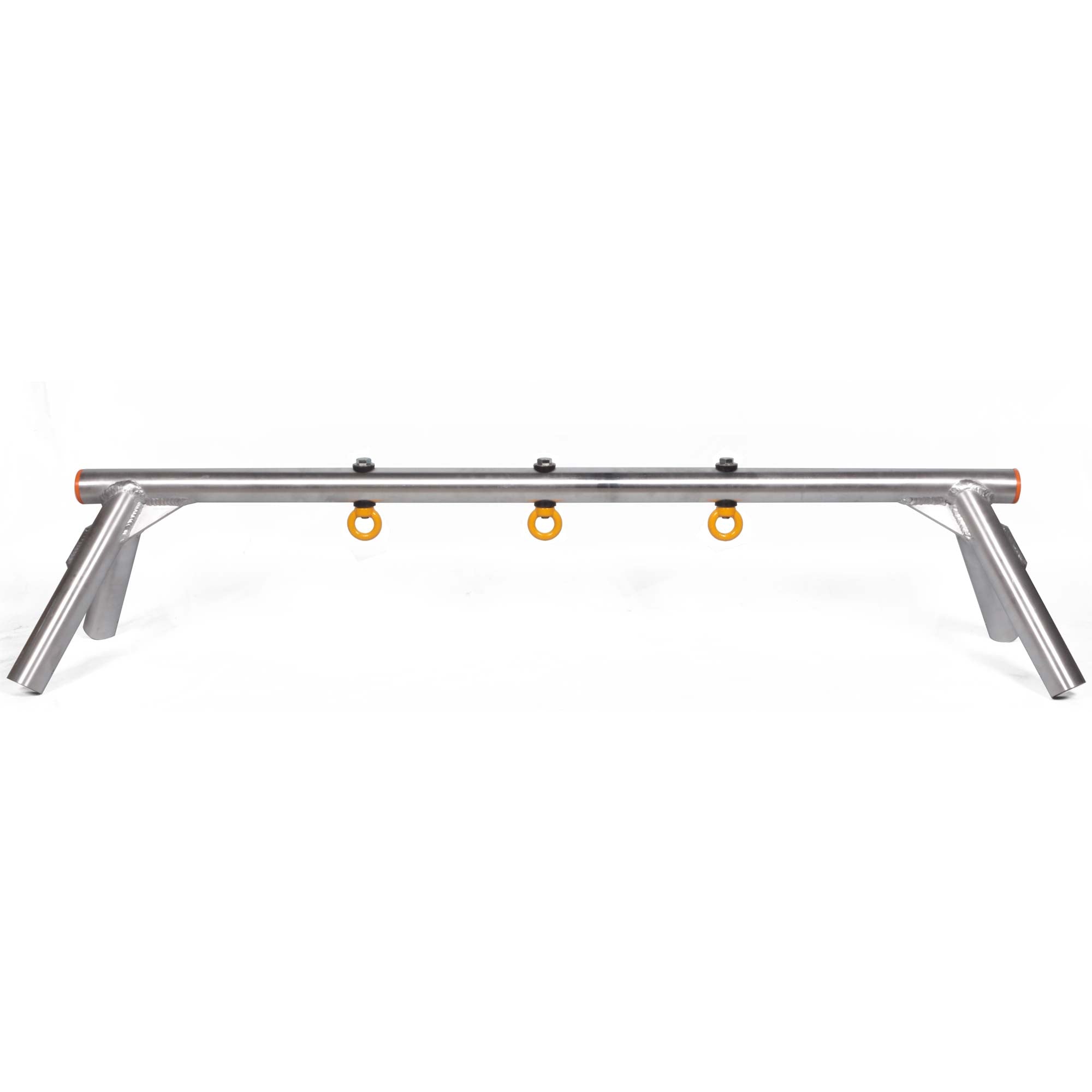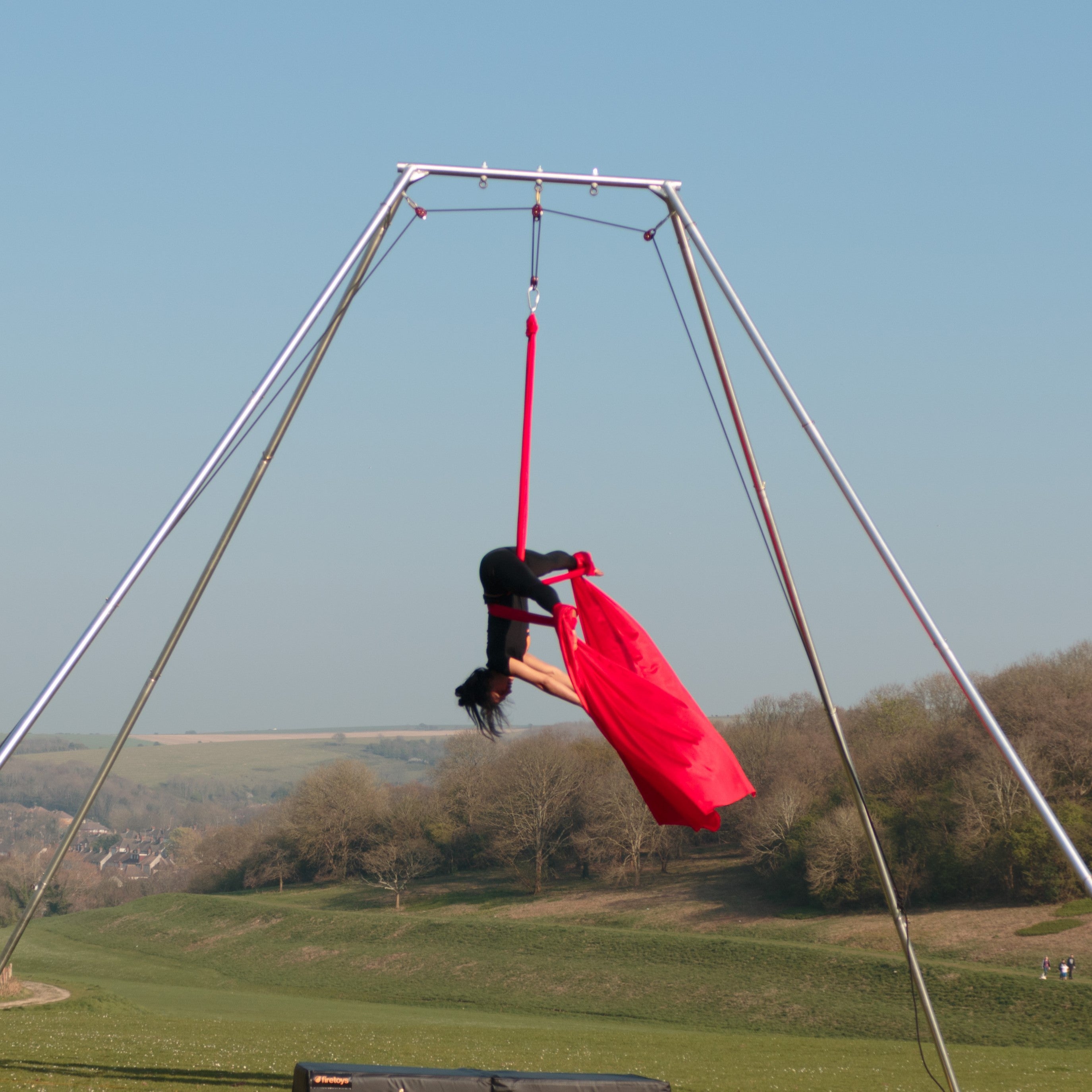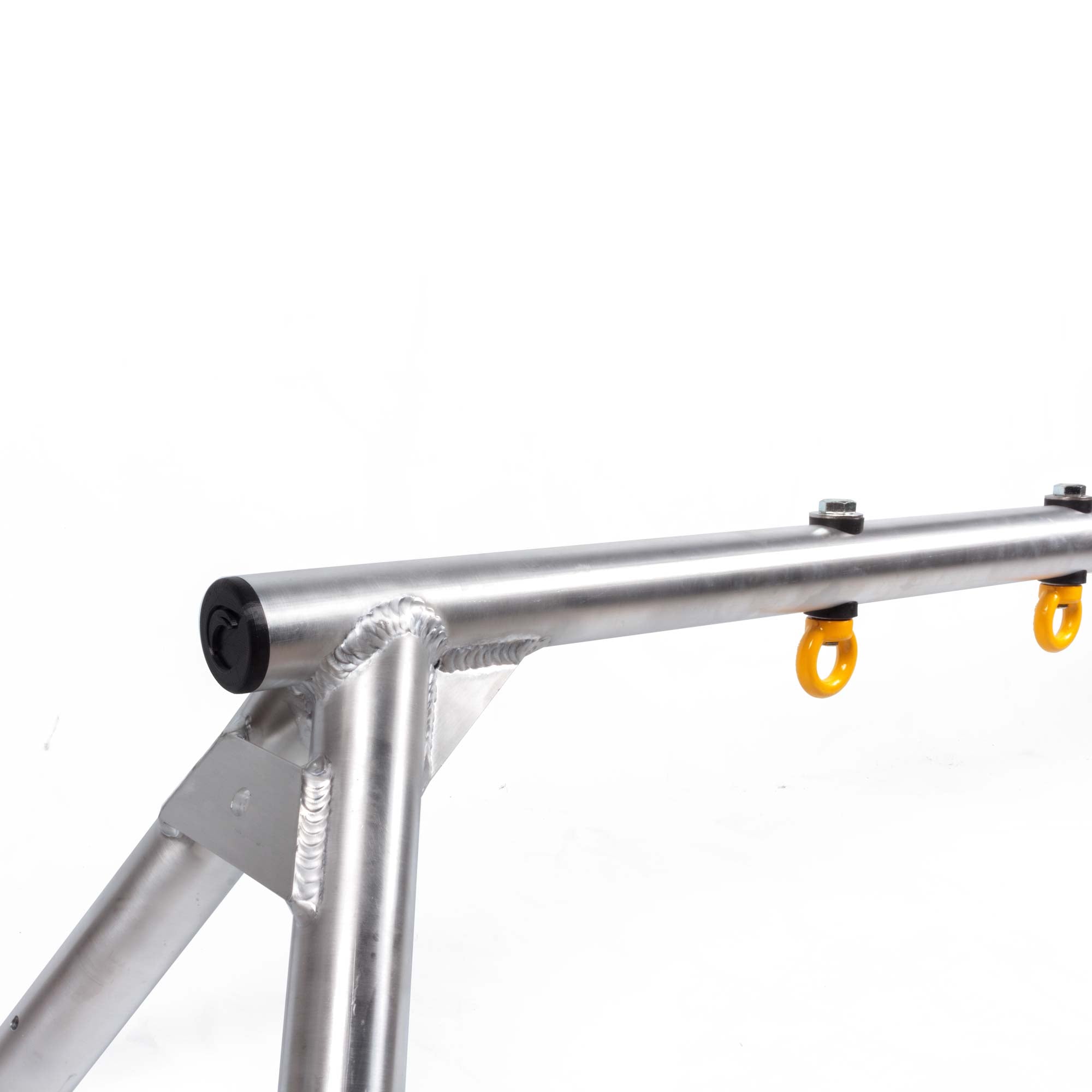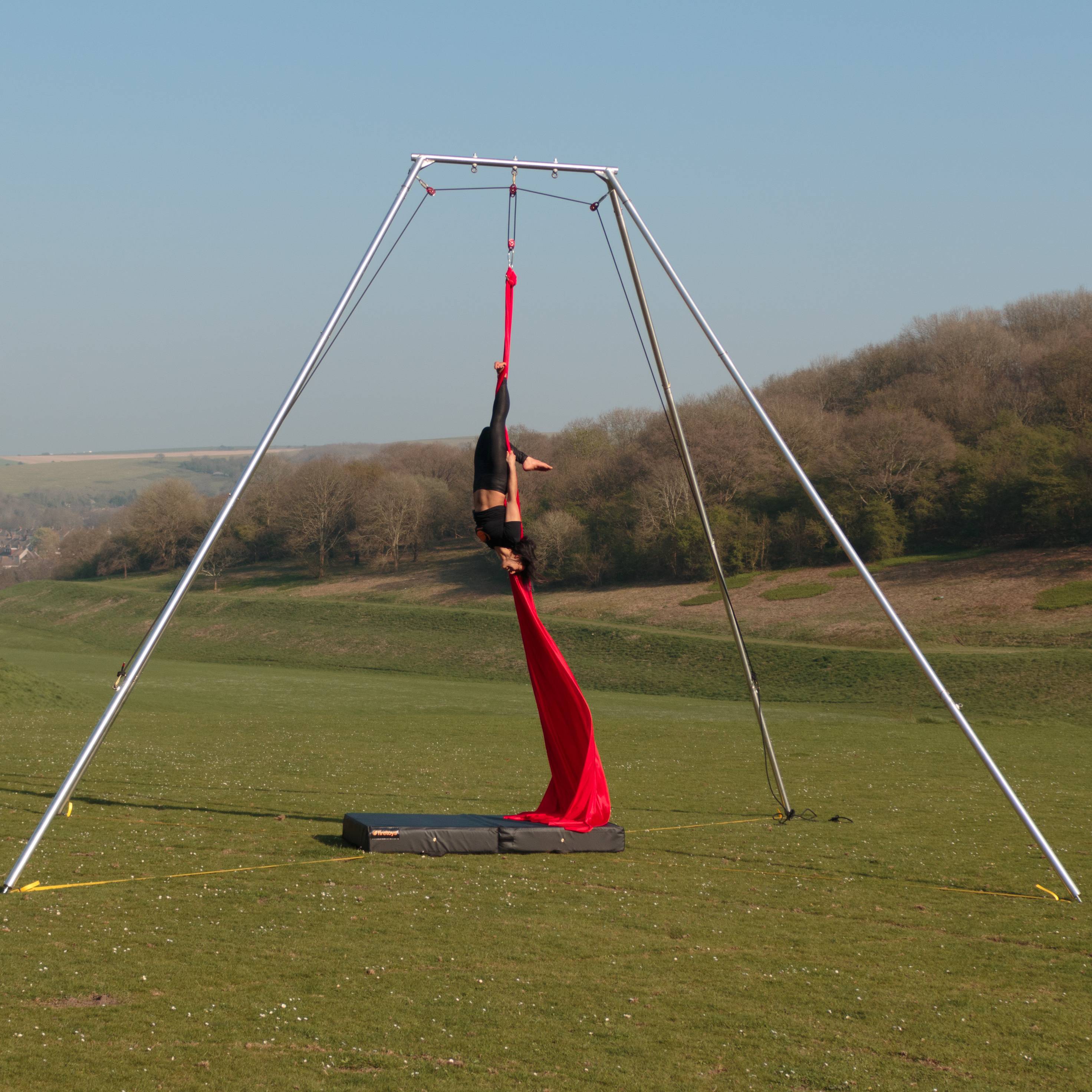
Thinking about setting up a training space at home? This blog is for you!
We understand how tempting it can be to create your very own aerial world at home, especially if you have limited options when it comes to classes, maybe the cost is starting to pile up, or maybe you just want to get that extra practice in! While these are all valid points for wanting to set up at home, there are also a lot of hidden costs and dangers with doing so. We are going to cover those below. While this is not a full guide, we hope it will give you the necessary knowledge to assess whether this is suitable for you, and how to go about doing this in the safest way possible.
Home Training vs Studio Training
As more and more people get into aerial and circus the more resources are being made to support these people. Resources like books, videos and podcasts! We are seeing more and more instructional videos appearing online and while this can be beneficial as a training aid, it should not be a substitute for professional in person instruction.

Learning at a Studio
One of the major benefits of learning at a studio is safety. At a studio, there are countless safety precautions. A good studio will have proper rigging, that is inspected often and maintained properly, that can easily support your weight and the dynamic weight you create when moving on an apparatus. They will also have proper safety equipment like crashmats and harnesses to help avoid injury. Another important safety precaution is a spotter. Your teacher will spot you when you try new tricks and they will correct any issues they see. An incorrectly wrapped silk can end very badly. An experienced teacher is important for learning aerial.
They will be able to show you progressions and can judge your skill level and physicality. Injuries will occur when people will try tricks that are above their skill level. It’s always best to bring a new video to your teacher to get their input rather than just trying it. For those who wish to perform, appearing at showcases and shows put on or endorsed by the studio will help you build your performance repertoire. Not only will studios give you the opportunity to perform, but they will help guide you through the process of act creation and costumes

Learning at Home
Aside from the fact that many homes are not designed to support the weight and forces generated by aerial (we’ll get into that), training at home can still be dangerous even if you have a secure rigging point. Ideally, you want to have someone available nearby who can help if something goes wrong. We don’t recommend learning aerial by yourself as the risk of learning incorrect technique, not only puts you at risk when doing the moves but can also lead to lifelong muscle, tendon, ligament, or even bone issues. No matter how detailed or thorough the video, nothing compares to an actual person talking you through a move. An in-person instructor can identify if a wrap is wrong and explain moves in various ways.
Their experience is also invaluable when putting together an act and performance. YouTube videos can also often leave out essential steps to perform a move properly. Many times a move requires you to engage many different muscle groups even if the move looks easy. An experienced performer, in a video, may activate a muscle they’ve trained more than you and pull off a move you simply aren’t ready for. Because YouTube is a one-way transaction you’re also not in a position to ask questions, gain feedback, and have your learning moderated responsibly. This doesn't mean, you can't use online resources to refresh your memory, or get tips and tricks, but it should not replace professional instruction.
How to Rig
If your instructor has given you the okay to train at home then you may have a few different options available.
Beams - First, you need to know what load a beam can support, and if the beam is wooden or metal. There are huge differences between these materials and it's important to know what you're dealing with from the very start. You also need to know if the beam is structural (we may be able to use this) or decorative (don't use).
With a steel beam, you maybe be able to work out if it is strong enough before calling in riggers. A steel joist has defined and consistent load values which can be looked up online based on the measurements.
With timber, there are lots of variations and these make a massive difference when it comes to rigging. Timber beams can never have a guaranteed WLL or BLL attributed to them as there are natural differences in the material, but a structural engineer can assess a timber beam and report on its usability.
The next thing you will need to know is how to attach it to the beam. The best thing to do would be to consult with someone qualified and experienced with rigging for circus to professionally install points for you to attach to that won't take away from the overall strength of the beam. When you stick a screw up into the bottom of the beam, you're screwing into a section of a beam that's pulling away from the screw. Over time, you'll be taking away a significant amount of the tension zone, which will reduce the overall strength of the beam.
Remember that rigging aerial at home can be tricky and dangerous if it's not done properly. Please take our advice, do your research, contact the professionals and only use equipment that is designed, tested and certified for aerial. Perform regular checks of all your equipment and replace any damaged items immediately. Above all, have fun but please train safely! (we like repeat customers)
Trees - Firetoys strongly advises against rigging from trees. Rigging from trees can be extremely dangerous and much more complex than most people realise. Branches are not always as strong as they appear, and rough bark can damage your equipment. Even a small person can cause a high dynamic force when training drops or beats with aerial apparatus. Here is more information about rigging from trees, including the problem of a sudden branch drop!
Eye Bolts - This is a metal bolt that is sunk into concrete either in a ceiling or floor. Then it's either mechanically or chemically bonded to that surface. Very strong, and very secure, but definitely one for professionals to install. Don't be tempted to use cheap ceiling hooks which screw into the bottom of a beam or ceiling. These are not rated for human loads and are not suitable hardware to install for this purpose.

Freestanding Rigs
If you rent your home, or are unable to set up a safe anchor point then a freestanding rig is a fantastic alternative. These rigs are designed with aerial in mind, and are usually quick and easy to set up. Using a rig also means that you can take your set up on the road and aren't restricted to training in one place. There's a range of rigs out there, including our very own Prodigy Aerial Yoga Rig, Big Rig and Big Rig XL.
Aerial Rigging Terminology
Anchor Point / Rigging Point - The hooks or brackets your equipment attaches to and hangs down from. This could be a single or double point configuration, depending on your space, requirements or personal preferences.
WLL - Working Load Limit, the amount of weight the apparatus can safely take. This is usually measured in KG
MBS / MBL - Minimum Breaking Strength / Minimum Breaking Load. This is the minimum load the equipment should break at. This is measured in kN. If a piece of equipment is rated to 25kN (approx. 2500 kg) then it could lift that amount, once, and then would need to be retired. In practice, we should never load the equipment to its MBS.
Static Load - The weight of the equipment, plus the weight of the user when not in motion.
Dynamic Force - The weight of the user and the weight of the equipment, plus the force of movement.
FoS / SF - Factor of Safety / Safety Factor, This is the ratio we apply to the BLL we get from our testing to determine the WLL of our equipment. It's important to understand as these compensate for unknown variables during use and installation. It acts as a buffer for dynamic forces and material deviations. For Firetoys equipment, we set the following safety factors depending on the material the apparatus is made from: - Natural Fibres (cotton) 10:1, - Synthetic Fibres (nylon/polyester) 7:1, - Steel 5:1. So a BLL of 10kN (1019kg of force) would give a WLL of 101kg for natural fibres, 142kg for synthetic fibres and 204kg for steel.
Rigging / Rigger - Installation of Aerial Apparatus is known as Rigging, this can be attaching your equipment to a freestanding Rig, or beam or joist. This is specialized work and should only be attempted by qualified professionals, known as Riggers.
Rigging Equipment
Strop / Spanset - These are looped polyester straps ranging from 50cm to 4m in length and are used to connect your equipment from a carabiner to the anchor point.
Carabiner - Another crucial and commonly used rigging component, this will connect your anchor point to your strop, and you may need more than one depending on what you're planning to practice on at home. All of the carabiners we sell are suitable for Aerial, but there may be a specific type that is best for you. Please don't buy small and cheap carabiners from hardware stores to use for Aerial rigging, they are not designed for this use.
Figure 8 / Rescue 8 - Commonly used to knot your silks onto. This can then be attached to your anchor point with a connector e.g. a carabiner.
Crash mat / Safety Net - Crash mats or safety nets are crucial to your safety, they absorb a lot of the force when you fall and give you something soft(ish!) to land on.
Check out the below videos from Mark Gibson at Circus Rigging
Remember..
Each installation will vary - You will need to buy the correct size or componentry for your needs or personal preferences, this includes the space you have to work in and the size or type of your equipment. Your ceiling might be a different height to your neighbours or friends, or you may be rigging different equipment with different needs- aerial silks won't be rigged in the same way as an aerial yoga hammock or a trapeze.
We aren't riggers - Many members of our team have completed rigging courses and can give general advice about what to buy, but we can't see the space in person and we can't load test the area you want to rig in. Because of this, it would be dangerous for us to provide you with installation equipment and we will always recommend you speak to a professional rigger or structural engineer.

